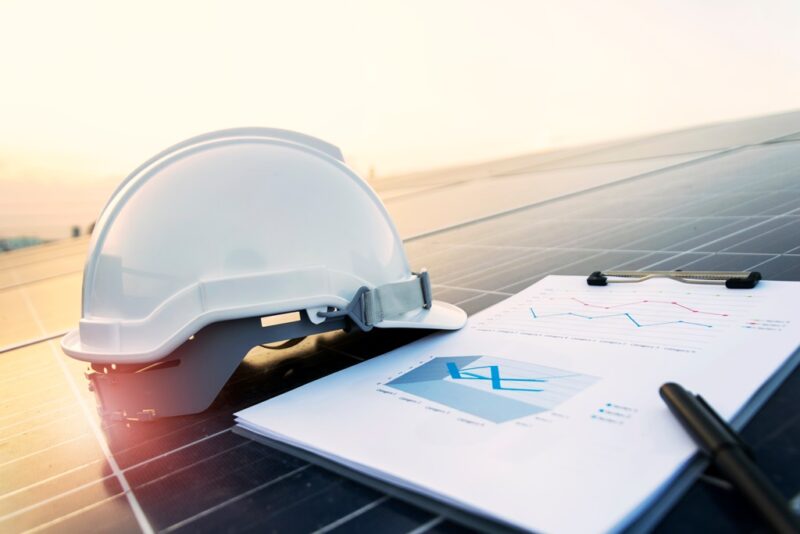Commercial Solar Proposal

Transitioning to solar energy has become an increasingly popular decision amongst businesses, given its substantial environmental and financial benefits.
However, the process often starts with the critical task of understanding and assessing a Commercial Solar Proposal.
This article offers a detailed guide to decoding a Commercial Solar quotation, emphasising the integral aspects to look for and the reasons why they matter.
1. Dissecting the Cost Breakdown in a Commercial Solar Proposal
The cost breakdown is a pivotal element in any Commercial Solar Systems proposal, encompassing a detailed and itemized list of all expected expenditures. These include the costs of Solar and Battery Systems, installation fees, ongoing maintenance expenses, and any additional outlays. By providing such clarity, businesses are enabled to make informed comparisons between different proposals, assessing which presents the most cost-effective solution for solar and battery price and overall system implementation.
It is, however, crucial to note that opting for the proposal with the lowest initial solar and battery price does not necessarily equate to the best value. Opting for high-quality equipment and expert installation may result in higher upfront costs but is likely to yield enhanced performance and extended durability. Such strategic investment mitigates long-term expenses, thereby optimizing the return on investment for Solar and Battery Systems.
The technical specification is an integral part of the Commercial Solar Proposal as it outlines the hardware components that constitute your solar system. It includes the solar panels, inverters, batteries (if included), and mounting equipment. When assessing these, pay attention to the brand, model, efficiency, and warranty provided for each component.
For instance, high-efficiency solar panels might be more expensive initially but can offer higher energy output and durability, enhancing the system’s return on investment over time. Therefore, the quality of equipment should be a significant factor in your decision-making process.
3. Assessing the System Design in a Commercial Solar Proposal
The Commercial Solar Proposal should include an optimal system design which is tailored to your premises and energy requirements. It should consider the roof’s size, shape, and orientation, local climate and solar irradiance, and potential shading issues. It also factors in your energy consumption patterns, ensuring the system’s capacity aligns with your energy demands.
When evaluating the design, assess how well it has been customised to your circumstances. A design that doesn’t consider the unique factors affecting your solar generation capacity could lead to suboptimal energy production.
4. Assessing the Estimated Output and Savings in a Commercial Solar Proposal
The estimated output and savings provide an insight into the financial benefits of the proposed solar system. The Commercial Solar Proposal should offer a realistic estimation of the energy the system will generate annually and how this translates into cost savings. These figures should take into account local weather data, solar panel positioning, and expected system efficiency.
Understanding these numbers can help you ascertain the proposal’s financial viability and calculate key metrics such as payback period and return on investment.
5. Delving into Maintenance and Warranty Details in a Commercial Solar Proposal
Understanding the maintenance and warranty provisions is crucial as it provides insight into the long-term performance and potential future costs associated with the solar system. The Commercial Solar Proposal should detail the expected lifespan of the equipment, the frequency and extent of routine maintenance, and the terms and conditions of the warranty.
Look for comprehensive warranties that cover both workmanship and equipment. Also, consider whether the company offers a performance guarantee that ensures the system will produce energy at a certain level for a given period.
6. Comparing Financing Options in a Commercial Solar Proposal
An ideal Commercial Solar Proposal will present multiple financing options, allowing you to choose the one that best aligns with your financial strategy. Options could include outright purchase, solar leasing, power purchase agreements (PPAs), or loans.
Each option carries different implications for upfront costs, ongoing payments, ownership of the system, and responsibility for maintenance and repairs. Thus, carefully evaluate these against your company’s financial capacity and energy goals.
7. Steering Through the Assessment Process of a Commercial Solar Proposal
Thoroughly assessing a Commercial Solar Proposal is a pivotal step in your business’s solar journey. It involves deep-diving into various components – from cost breakdowns and equipment specifications to system design, estimated output, maintenance and warranty provisions, and financing options.
By undertaking this comprehensive analysis, businesses can confidently navigate Australia’s dynamic solar market and select the solar solution that best aligns with their unique needs and aspirations.
 1300 880 890
1300 880 890